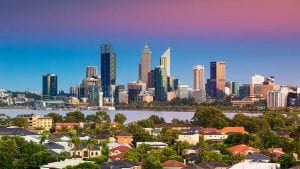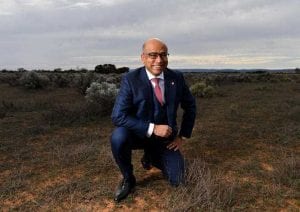The first thing to note about the results presentation from Australia’s biggest network operator, Spark Infrastructure, is that it is title “Future Energy” and it does not include a picture of a coal fired generator. Or a gas plant.
Instead, it is solar panels. And in case anyone listening to the presentation broadcast, CEO Rick Francis made it clear: “This (clean energy transition) is happening now, irrespective of the policy uncertainty.”
Which is to say that the conservative media and the Coalition government can shout all they want, but they can’t prevent what is inevitable – the exit of ageing, highly polluting coal generators and their replacement with the cheapest option – a mix of renewables and storage.
Spark – whose interests extend from the Transgrid transmission company to distributed networks in Victoria and South Australia – says it understands this and is ready for this transition.
It is hooking up dozens and dozens of large scale wind and solar projects, various storage proposals, and numerous rooftop solar installations, as well as technologies that help “smooth” the output and impacts of renewables on the grid.
 This graph illustrates just how quickly this transition is likely to take place. It is from the “neutral” scenario of the Australian Energy Market Operator’s integrated System Plan, and shows a rapid switch from the remaining fossil fuel generators to a mix of wind, solar, hydro and other forms of storage and distributed generation. Remember, this is just the ‘neutral case.”
This graph illustrates just how quickly this transition is likely to take place. It is from the “neutral” scenario of the Australian Energy Market Operator’s integrated System Plan, and shows a rapid switch from the remaining fossil fuel generators to a mix of wind, solar, hydro and other forms of storage and distributed generation. Remember, this is just the ‘neutral case.”
NSW stands out as the state with the biggest transformation, given the impending retirement of its main coal generators, but in South Australia fossil fuels are all but eliminated, with just a small amount of gas generation continuing.
Ironically, the technical studies behind the Coalition government’s support for the Snowy 2.0 and Tasmania pumped hydro schemes make clear that these multi-billion dollar investment only make sense if the exit of coal is accelerated rather than slowed.
 This is what the current exit looks like, a reduction of 60 per cent of the coal capacity over the next 20 years, but there is a view among analysts that this will be accelerated.
This is what the current exit looks like, a reduction of 60 per cent of the coal capacity over the next 20 years, but there is a view among analysts that this will be accelerated.
The feasibility studies for Tasmania says the economics of fast tracking that project depend on bringing forward the closure of at least 5,000MW of coal generation, and Snowy 2.0 would also depend on it.
In the meantime, Transgrid says it is already connecting 20 large scale projects in NSW. Another 14,000MW of large scale wind and solar is awaiting approval.











